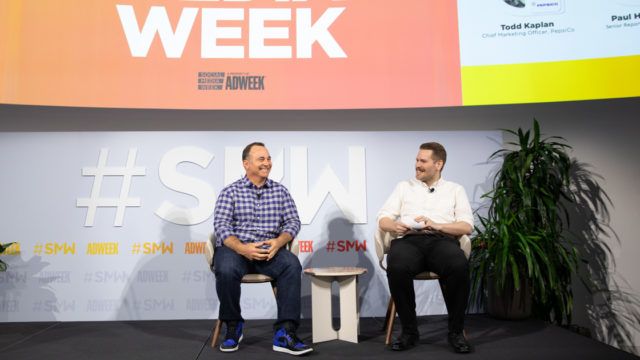Inspiration meets innovation at Brandweek, the ultimate marketing experience. Join industry luminaries, rising talent and strategic experts in Phoenix, Arizona this September 23–26 to assess challenges, develop solutions and create new pathways for growth. Register early to save.
It’s been said that the “shift to social media” is as meaningful as when audiences migrated from radio to television. In a recent interview with Adweek, Gary Vaynerchuk heralded his agency’s digital-first approach, stating that other agencies were ‘tone deaf’ and operated in a ‘creative nirvana.’ A bold statement to make.
We cannot agree entirely. A social-first approach should not always be the first choice for media planning and placement nor for any brand looking to build awareness. Brands need to look beyond social to engage with all humans.
We must continue to acknowledge that we, in the advertising industry, are not the ‘consumer.’ As guardians of the media galaxy, we must not forget that brands exist in a wider setting than just our own personal relationship with them. And this includes where (or which media channel) we choose to engage with them.
Social media channels can play an intrinsic role in building a brand. But brands’ built-in social are the outliers rather than the norm. If social growth was so easy we’d all be running home cookery businesses and selling macrame worry dolls on Etsy.
For real people in the real world, other media channels, such as radio, are as much a part of their media consumption throughout the day as social channels. The most recent IPA Touchpoints report shows that for adults across the UK, media consumption of both radio and social media channels are on a level footing at 19% of the media day. And according to Radio Today, UK commercial radio increased its share of listening time to 48%, up from 47.1% in Q3 2022. Its total audience is now 36.77m, just shy of its biggest ever audience of 36.8m in the last quarter.
Part of the process of building a brand isn’t just making it meaningful to us. It is about creating a shared experience and understanding that feels right not just for us, but for those around us. It’s a prerequisite, not a nice to have, for a brand to have meaning and resonate with its audience.
This is why savvy digitally born brands don’t have a purely digital-only approach when it comes to media spending. In fact, brands like Netflix are outspending the market in broadcast channels, tapping into the unrivaled power and unique capability that OOH, radio and TV (inc. VoD) channels have to deliver the brand experience.
According to Thinkbox, “TV is the perfect medium for brands to educate consumers and drive website visits simultaneously—especially if the product is clever, new or difficult to understand. This subsequently has a positive impact on conversion rate by bringing prospective customers to the site that understand the proposition.”
Digital-born brands are fully aware that the only true way to demonstrate, and positively provoke, growth is to have a clear understanding of the role every media channel plays in delivering brand messaging and understanding.
Let’s also not forget that the ad industry is going through a period of significant change. This includes Apple, Google and Facebook privacy updates and the birth of “anti-click-through day,” through to the introduction of HFSS regulations.
This is creating an extraordinary reset moment for the sector, where measurement becomes critical. To be effective, brands must look to a calibrated portfolio approach, acknowledging that no single measurement solution in isolation will work.
It would be fair to say that the rise in better macro measurement is helping to assess more clearly the role individual media channels play when it comes to brand building and provoking growth for individual brands. And industry collaboration on unified measurement tools such as CFlight has proved invaluable in helping to capture advertising exposures across all screens and all platforms.
Despite this, one of the biggest challenges the ad industry is currently facing is understanding the difference between reported media consumption and actual consumption. The fragmentation of media consumption and the rise of walled gardens have made this harder than ever. This is as much, if not more, of a problem in the social media space.
Buying reach is not how brands should approach social. The power of algorithms means we should be focused on outcomes and ideally only those outcomes that align with brand and/or business objectives.
No single media mix is best for all brand outcomes, and hence there is no single recipe for campaign success. For example, reach is often the default for driving brand awareness, but we know that reach isn’t highly viewable in social auction buys. To navigate this, we recommend tweaking in favor of objectives that aid brand effect, e.g., completed views in forced view environments can aid better recall and consideration.
Brands that are careful to manage the desires of audiences with the expectations and evolution of the ad industry will do a better job of building brand equity while sustaining and growing revenues. And advertisers and agencies that understand the variable attitudes to channels, formats and brands can more selectively align their media investments.
Crucially, social media may be the “glam” new(ish) kid on the block in comparison to more traditional media, but it’s not always the most effective choice when it comes to delivering on brand objectives in a way that deeply resonates. Don’t forgo all other channels by putting social media on a pedestal. Just because it’s not digital, doesn’t make it a dinosaur.










